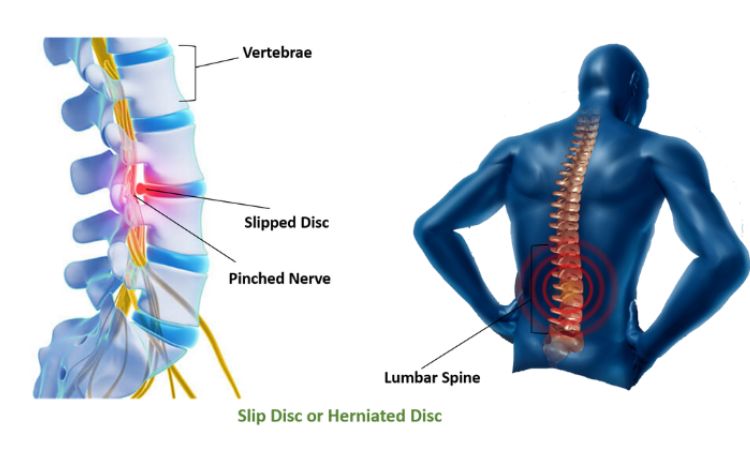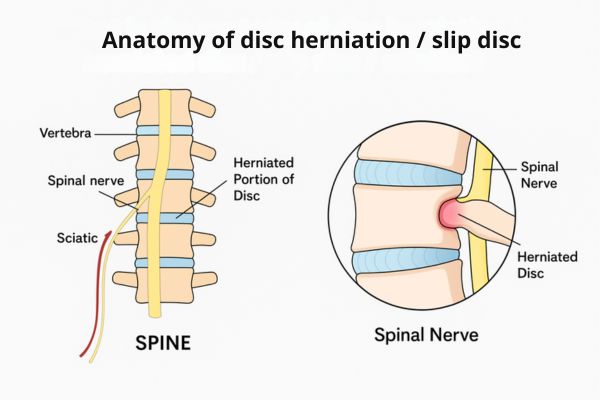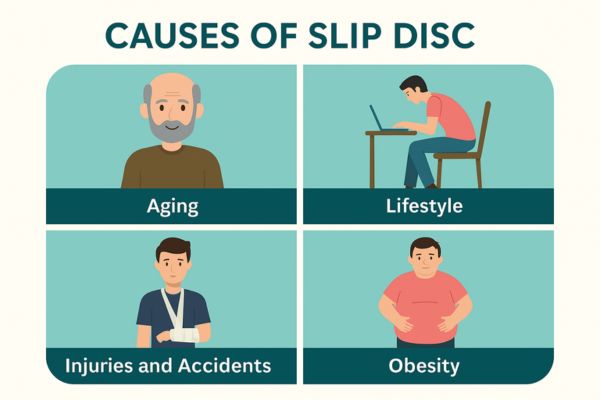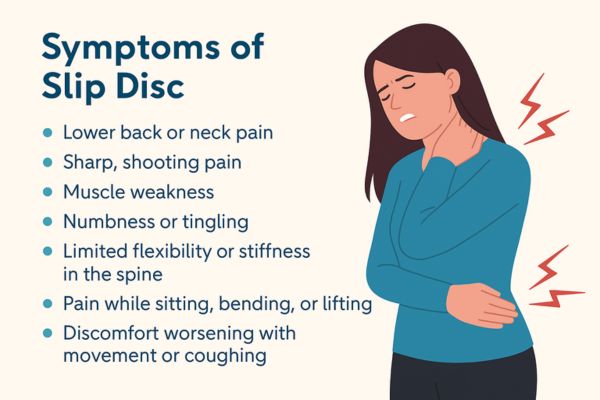Slip Disc Treatment In Mumbai by Dr. Vishal Kundnani

Popular Slip Disc Doctor in Mumbai - Dr. Vishal Kundnani
What is a slipped disc?
Slip Disc Treatment In Mumbai by Dr. Vishal Kundnani offers world-class,
patient-centric care to individuals suffering from persistent back pain, numbness,
and nerve compression issues. Dr. Vishal Kundnani, a highly acclaimed spine surgeon,
specializes in advanced techniques—ranging from conservative therapies to minimally invasive and
endoscopic spine surgeries—to treat slipped disc conditions with precision and long-term relief.
Spine surgery for slip disc is offered with the latest methods to
ensure faster recovery and effective pain management.
Injury or weakness can cause the inner
jelly like portion of the disk to protrude through the outer ring. This is known as a slipped or
herniated disk. This causes pain and discomfort. If the slipped disk compresses one of your
spinal nerves, you may also experience tingling, numbness and pain along the affected nerve. As
the lumbar spine (lower back) carries most of the body weight, it tends to "slip" more than
higher levels. Spine surgery for slip disc is considered when conservative treatment
options do not provide relief.
What is the anatomy of disc herniation / herniated disc/ slip disc /sciatica?

Human Spine is made of up 33 bones (vertebrae) that are cushioned by discs. These vertebrae are divided by region: neck (cervical spine), mid-back (thoracic spine), and low back (lumbar spine). At the lower end of your spine, you also have the sacrum and the coccyx, which is commonly called your tailbone. Discs are present between these bones. The disks protect the bones by absorbing the shocks from daily activities like walking, lifting, and twisting. Each disk has two parts—a soft, gelatinous inner portion (nucleus pulposus) and a tough outer ring (annulus fibrosis). Together, the vertebrae and discs form a tunnel through which the spinal cords and nerve pass.
What are the causes of slip disc?
The aetiology/cause of slip disc is multifactorial, there is no evidence to prove/disprove the quantitative effect of one or other.

The risk factors for slip disc can be :
- Ageing: As a part of the normal age-related degenerative process.
- Lifestyle: Stress and emotional tension, poor posture, standing for long periods, or sitting incorrectly can cause slip disc. Heavy physical work, lifting, or awkward positions can hurt your back.
- Injuries and Accidents: Injury to muscle, ligaments, or soft tissue can lead to slip disc. Fractures due to falls or accidents are common causes.
- Obesity: Being overweight puts pressure and stress on the back, especially the low back, and aggravates other conditions like arthritis or spinal stenosis.
What Are the Symptoms of Slip Disc?

Symptoms of a slipped disc can vary depending on its location and severity. Some patients may experience mild discomfort, while others face debilitating pain. Common signs include:
- Lower back or neck pain
- Sharp, shooting pain that radiates to the arms or legs
- Muscle weakness, especially in limbs
- Numbness or tingling in the affected area
- Limited flexibility or stiffness in the spine
- Pain while sitting, bending, or lifting
- Discomfort worsening with movement or coughing
Note: If the herniated disc compresses the sciatic nerve, the symptoms may extend down one leg—commonly referred to as sciatica.
Why Choose Dr. Vishal Kundnani for Slip Disc Treatment in Mumbai?
- ✅ Renowned spine surgeon with years of experience
- ✅ Minimally invasive and endoscopic techniques for faster recovery
- ✅ Comprehensive diagnosis using advanced imaging tools
- ✅ Personalized treatment plans, both non-surgical and surgical including spine surgery for slip disc
- ✅ Compassionate, patient-focused care approach
📍 Start Your Recovery Journey Today
If you're suffering from back pain, numbness, or mobility issues, don't delay your treatment. Slip Disc Treatment In Mumbai by Dr. Vishal Kundnani is your gateway to a pain-free, active lifestyle.
📞 Book your consultation today and take the first step toward a healthier spine.

